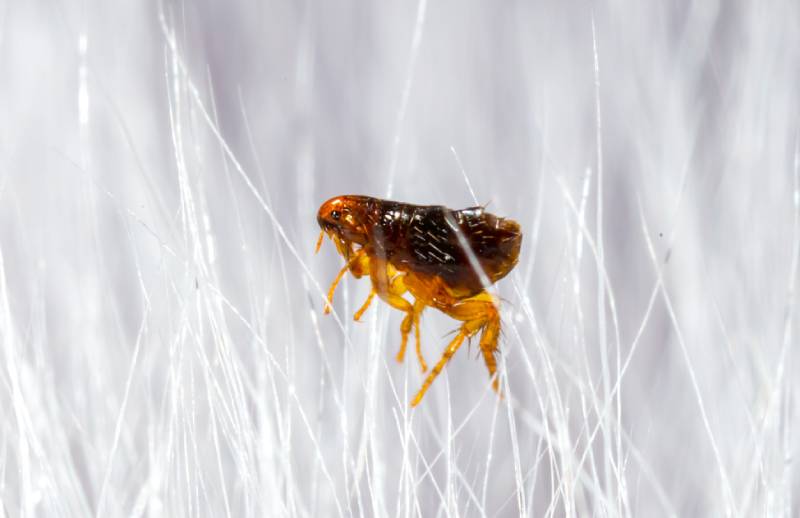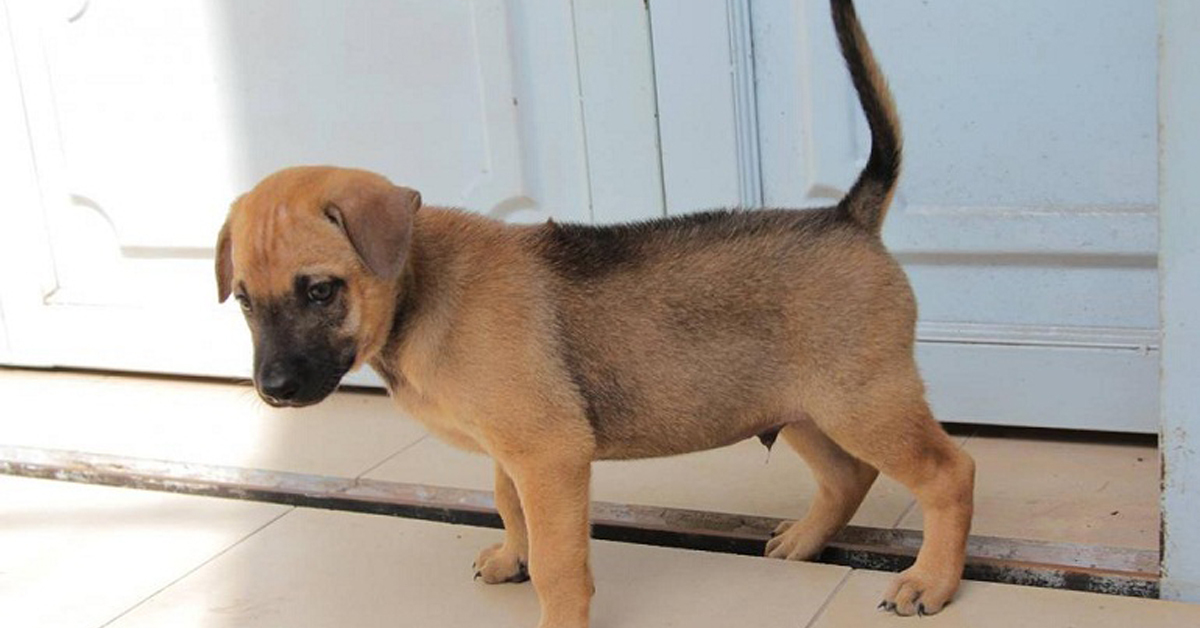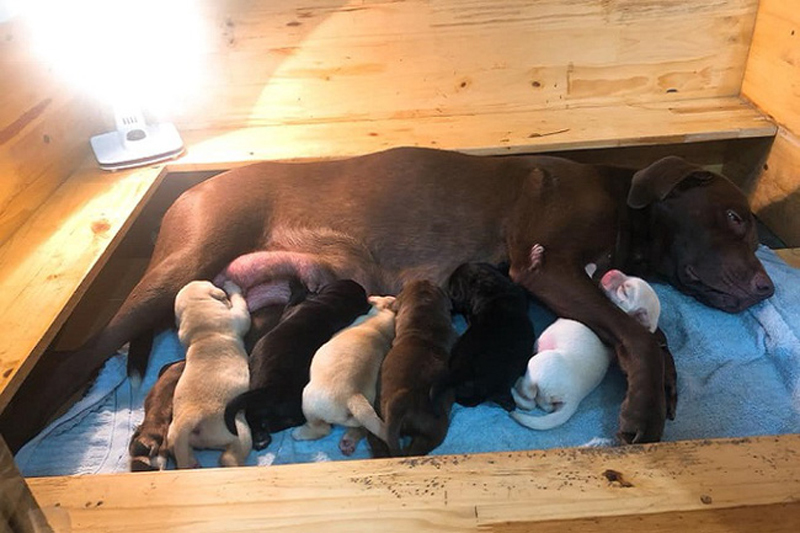Puppy Newborns are ideal hosts for fleas to parasitize and lay eggs. The blood-sucking fleas can cause the puppy's skin to itch and irritate. harmful to pets. To treat puppies for fleas, you need to keep your dog clean and treat fleas on the mother and with bedding or soft objects that the puppy comes in contact with. Learn how to treat fleas for puppies and mother dogs through the article below.
The most effective way to treat fleas for puppies
1. Do not use conventional flea treatment products for puppies

Newborn puppies are the perfect place for fleas to live, because their bodies are very warm and easily suck blood. Meanwhile, there are currently no flea products that are safe for puppies at birth. Because puppies are born, their internal organs are often more sensitive than adult dogs, so it is easy to experience the side effects of flea medications.
If they use drugs, their bodies are prone to side effects such as excessive drooling, vomiting, difficulty breathing, or extreme sensitivity to stimuli or severe depression.
Many flea medication products now have a clear warning on the label that they are not suitable for puppies. Some other products have not been tested on puppies either. So manufacturers often contraindicated use for puppies.
In particular, you should avoid using products containing Permethrin, because this substance is not safe for puppies. Because the dog's metabolism is too weak and it is difficult to break down Permethrin. This substance can accumulate in the puppy's body and cause nerve damage, causing complications such as excessive tremors, drooling, paralysis or convulsions. Using pet products that do not contain permethrin is less effective and is a waste of money.
2. Warm water bath for puppies
The only solution to getting rid of puppy fleas is to hand and bathe the puppy. To bathe your puppy, you need to fill the tub or basin with warm water. The temperature of the bath water for puppies is similar to the temperature of bath water for babies.
After preparing the water, you put the puppy in the water bath, using your hands to keep their head above the surface of the water so that the dog does not sink. When bathing, scoop water with your hand and pour it over the dog's coat until it is completely wet and gently rub it to clean the coat. Finally, you take the dog out of the water, put the dog in a warm and clean towel, and gently dry the water.
3. Use a puppy comb to get rid of fleas

After bathing, wrap the puppy in a dry towel and lay it on a flat surface. Then brush the puppy's coat with a specialized comb while the coat is still wet to remove all fleas. The teeth of a flea comb are usually very thick, so they can pull all the fleas out of a puppy's coat.
When brushing your puppy for fleas, you should start brushing from the neck and over an area of fur. Brush each patch of coat until the entire body of the puppy has been brushed and all fleas have been removed.
4. Kill all fleas after brushing
After combing all the fleas out of your puppy's body, you should kill all fleas to prevent them from returning and causing reinfection. You can kill them by rubbing them between your fingernails or by dropping them in boiling water.
If boiling water is used, keep the cup of water out of reach of the puppy so they don't hit the cup and get burned.
5. Flea prevention for puppies
To prevent fleas in puppies, you should keep your puppy away from places where fleas may be present, such as bed sheets, or pets that have fleas. Be sure not to spray flea-preventive sprays on your puppy's coat. If the mother dog is infected with fleas, you should separate the puppies from the mother or the bedding that has not been flea treated to prevent reinfection of the puppies.
6. Know when to use flea medicine for puppies
As puppies grow older, their bodies can adapt to the anti-flea ingredients in the medicine. At this point, using flea medicine will be safer for dogs. You need to carefully read the instructions on the medicine label to know the specific age that the puppy is allowed to use. Eg
- Revolution (with active ingredient Selamectin): Use for babies after 7 weeks of age.
- Frontline (with active ingredient Fipronil): For use on puppies after 8 weeks of age.
- Oral medications such as Comfortis (with active ingredient Spinosad): Safe to use on puppies after 14 weeks of age.
- Do not use flea medication on underage puppies as recommended.

How to treat fleas for mother dogs to prevent infection to puppies
1. Why should the mother dog flea treatment?
If puppies in the same litter are infected with fleas, then their mother is likely to be infected with fleas as well. Therefore, you need to take measures to eliminate fleas for the mother dog to avoid re-infecting the puppies. In addition, other pets in the house can also come into contact with the mother dog or puppy, posing a risk of flea infection, so it should also be handled.

2. Use only prescription drugs
The mother dog can use flea medicine, but only prescription drugs and you also need to choose carefully. Because when the mother dog is nursing, some chemicals in the medicine can pass from the mother's milk into the puppy's body and cause illness. Owners should only use prescription products specifically designed for nursing mothers.
Currently, some flea medication products are often labeled "natural" or "drug-free". But this doesn't mean it's safe for puppies either. And while they don't cause any negative side effects, these products are very ineffective at treating fleas.
3. Should take medicine containing Selamectin
Prescription flea medications containing Selamectin (such as Revolution or Stronghold) are generally approved for use in pregnant or lactating mother dogs. Apply the medicine to the mother dog's skin, then let it dry for a few hours before letting the mother dog come into contact with the puppies.
Because the drug contains the ingredient Selamectin, it should only be used according to the recommended dosage and for external use. If taken by mouth, Selamectin can cause fetal abnormalities.
4. Avoid using drugs containing Fipronil and Spinosad
Flea medications containing Fipronil and Spinosad are not safe for pregnant or nursing dogs. You should read drug labels carefully or consult your veterinarian before use, avoid using medicines containing these ingredients.
- Fipronil ingredient: This ingredient is found in Frontline flea repellent and should not be used by pregnant or lactating mother dogs.
- Ingredient Spinosad: This ingredient is present in Comfortis oral drug, can be excreted in breast milk. It is not known at this time whether Spinosad will cause side effects in puppies. Therefore, you should avoid using this product when treating mother dogs for fleas.